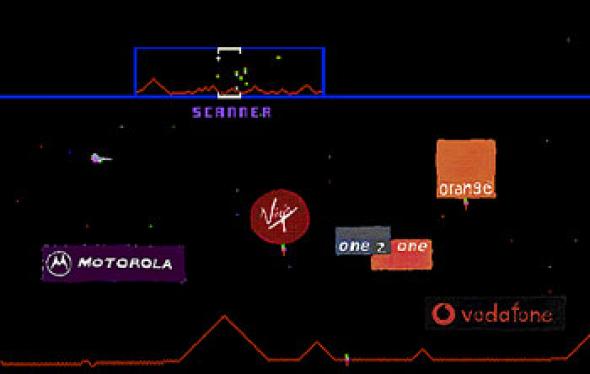There and Back There Again
John Paul Bichard provides a meticulously objective historical account of how technologies converged to create the wonder called m-gaming. Fact-checkers, go home!
Plug in at the mains society at large has embraced e-culture and in the process relegated the self-consciously virtual domain to the history books. Video games consoles, mobile phones and digital TV signal an end to the rarefied realm of the cybernaut. But a legacy remains, one that informs and is incorporated into the merging of technologies that have, in their time, reflected the dreams of an age. Push the on button.
Rewind 95 years to the dawn of the last century, the cathode ray tube had yet to be invented and the telegraph remained the principle means of long distance communication. Static electricity was still being misused as a medical treatment and a radio engineer named Lee de Forest, soon to be father of long distance telephony, transmitted a message to an experimental telephone in a moving automobile.
Fast forward 75 years – to a time when teenagers weren’t allowed to be over 40 and have a job in the media, when punk was just on the turn and would-be new romantics were stocking up on hair spray and lace. An era where Thatcherism promised to right the wrongs of socialism, when greed was good, Yuppiedom was on the rise and a personal telephone was developed that could be carried around independently (even though it came with 20kg of batteries in a shoulder bag). An age when the Cold War was still deep frozen, and the US military were establishing a global Telecoms based network that couldn’t be disrupted by alien forces, domestic or overseas. In the homestead, VCRs were being treated to video nasties and ultra-lo budget zombie movies. A revolution was in the offing; in bedrooms throughout the affluent West, soon-to-be-termed geeks were sitting for hours in front of tiny black and white monitors, staring at lines of text and pixellated blocks, tapping away at the first home computers.
Pause – and so continued the march of technological progress. Advancing at breakneck speed, propelling a self-obsessed Western civilisation onwards to a braver new future. The Internet spreading to cover the more lucrative parts of the globe, computers relentlessly doubling in speed, halving in price. Video games catching the imagination not only of kids but their would-be born-again parents, injected with new found virtuo-cyber fever. Industry learning to embrace ‘.comism’ and a brighter, more ethically clean marketing utopia which, like all good things, has come together, neatly, quietly and efficiently. The mechanisms which underpin consumer society – commerce, information, communication and leisure – now settling on a new or revitalised commodity. The miniaturised, perfectly formed progeny of nearly two centuries of technological achievement which acts as a coda to the march from industrial revolution to information age. The mobile phone, an information gateway in the hands of the proletariat. Instant access to personal banking; the ability to pay bills and encrypt credit card details on the move. To book flights, meals and cinema tickets and order books and CDs with a flick of the thumb. To have customised news delivered when and where it is required. And, if there is time left, not only is the World Wide Web continuously and multiply open for browsing, but there is also the promise of 24 hour interactive network-ready entertainment. The icing on the multi-tiered mobile electronic cake; the m-game.
Play – slow beginnings as there is seemingly nothing on offer from the last decade of vast, hungry, 3D, 60 frame per second mammoth computer games. Mobile processor power is low, memory tiny and battery-life brief. So the source of current m-games harks back to those nerdy 80’s days of crude lo-res graphics and 1001 things to do with a pixel. A steady diet of popular card games, reversi, tic-tac-toe and hangman are out there now. Look to arcade classics like Defender and Frogger for an obvious second wave as the code exists and the system requirements are lean. There is, of course, the promise of big colour screens, ultra high bandwidth over the airwaves and huge memory capacity in the handset which remain a dream for the ‘near’ future. In the meantime, the ease of programming in a simple technological environment, coupled with the widespread social acceptance of the video game genre will mean that a slightly different type of game will emerge via the microwave. With nearly 30 million m-phone owners in the UK, m-games will be structured to appeal to wider audiences with more of an emphasis on strategy and ideas, less on frantic action. The network/multiplay aspects of gaming will figure large with access to bigger and more complex communities and wider cultural influences. With the likes of Virgin Mobile forging alliances with existing games companies and funding research into wider gaming cultures, video gaming can shake off its nerd-to-lad provenance and start acknowledging life beyond the male white programmer.
Eject – So the landscape of the mobile phone is vast. The focus of early 21st century technology is the hand. The dreams of recent science fiction are now fact. A new chapter has begun; m-culture is upon us.
John Paul Bichard <john AT liquid-idea.com>
Mute Books Orders
For Mute Books distribution contact Anagram Books
contact@anagrambooks.com
For online purchases visit anagrambooks.com








